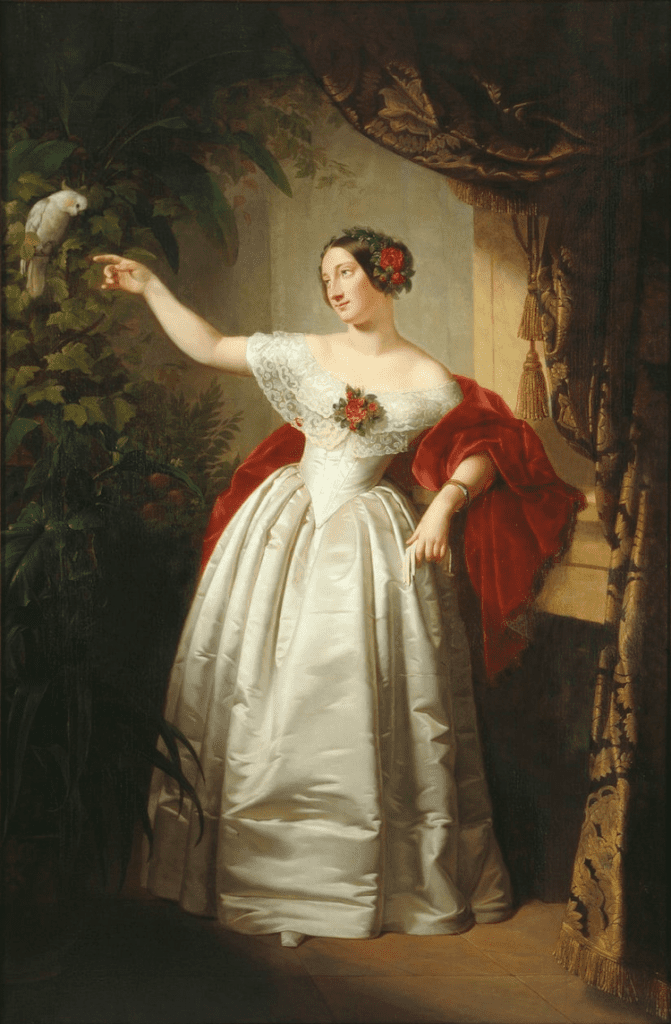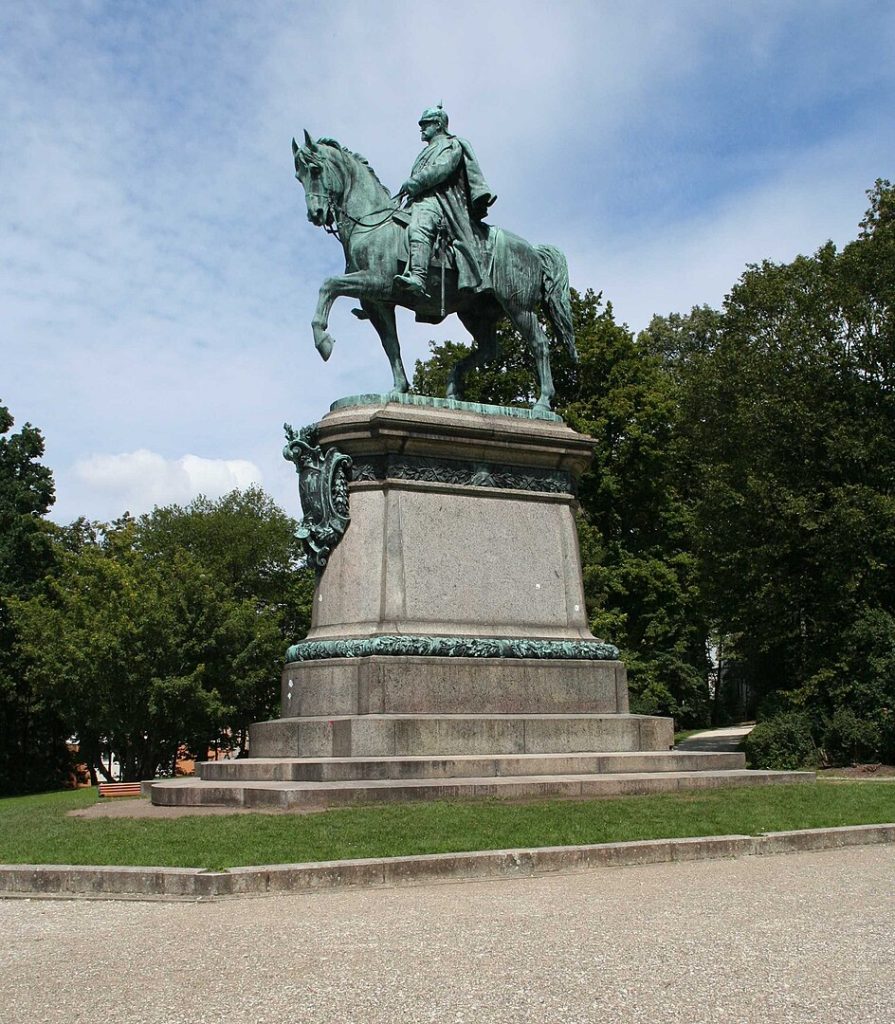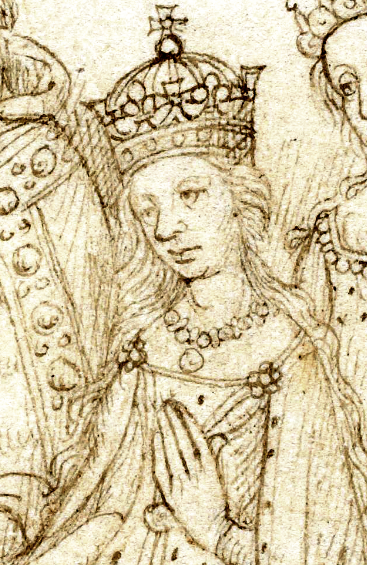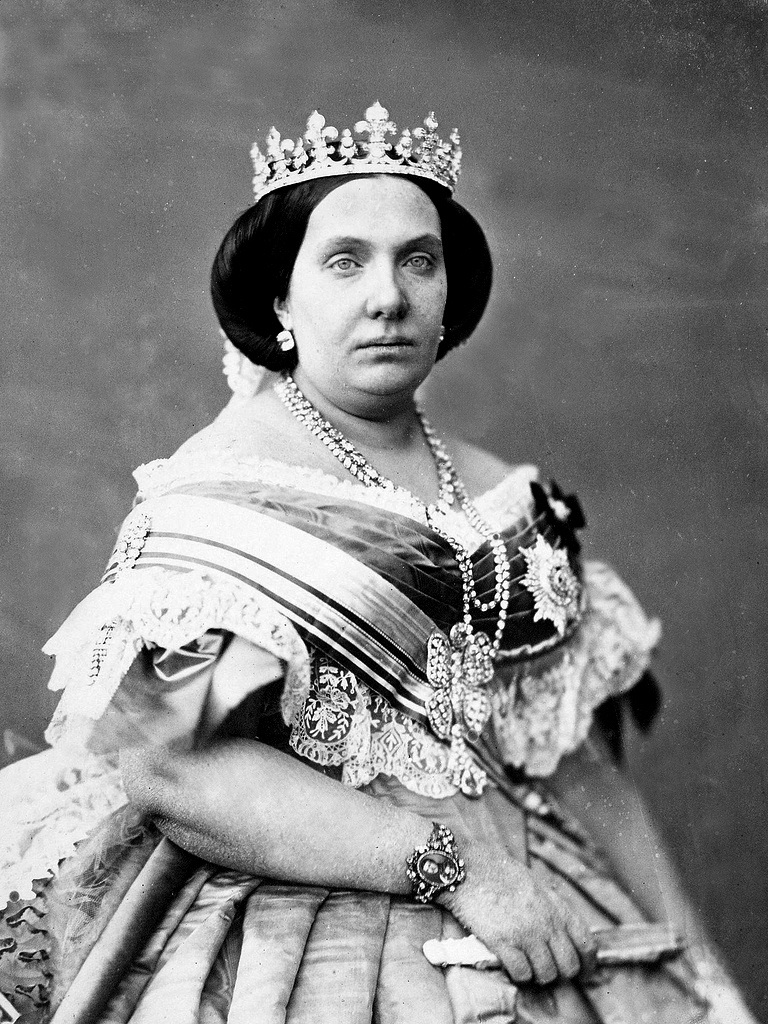Ernest II, the Duke of Saxe-Coburg and Gotha, was a notable European aristocrat who made substantial political, cultural, and social contributions throughout his life and rule.
Ernest II, who was born in 1818 and ruled from 1844 until his death in 1893, played a pivotal role in shaping the political landscape of Europe in the 19th century.
Ernest II Duke of Saxe-Coburg and Gotha, a pivotal figure in the unification of Germany and a highly influential member of European royalty, left a legacy that continues to impact and be studied in the region and beyond.
Early Life and Inheritance
Born as Hereditary Prince of Saxe-Coburg-Gotha (1818)
Ernest II was born at Ehrenburg Palace in Coburg, part of the duchy of Saxe-Coburg-Saalfeld, Germany on June 21, 1818.
He was the elder son of Ernst I, Duke of Saxe-Coburg and Gotha and his first wife Louise of Saxe-Gotha-Altenburg.
Being born as the Hereditary Prince of Saxe-Coburg and Gotha, he was ingrained with a life of responsibility and privilege within one of the most distinguished European families of his era.
Childhood Experiences

Ernest grew up in the lavish environment of Ehrenburg Palace, where he received a quality education to equip him for his future royal responsibilities.
His education was comprehensive, encompassing many subjects to equip him for leadership and his forthcoming role.
He developed diverse interests during this period, largely due to the intellectual and cultural atmosphere of his upbringing. However, his childhood was significantly marred by his parents’ turbulent relationship.
Parental Influence
Ernst I and Louise, his parents, had a notoriously troubled and turbulent marriage. Their union was characterized by regular disputes and led to their separation in 1824. Not long after, they formally divorced in 1826.
The young Prince Ernest was significantly influenced by this period of family turmoil. However, the domestic instability served to mold him, instilling resilience and imparting an understanding of personal and political relationships that could not be learned through conventional means.
Ernest gained a good understanding of governance and European aristocracy, largely due to the influence and teachings of his parents, despite the challenges he faced.
Ernest II Duke of Saxe-Coburg and Gotha’s Relationship with Prince Albert and Queen Victoria
Bond with Prince Albert and Queen Victoria
Prince Ernest II Duke of Saxe-Coburg and Gotha was the older brother of Prince Albert, the Prince Consort of Queen Victoria. This gave Ernest a prominent link to the British royal family. Ernest and Albert were close as children and remained so as adults.
Queen Victoria’s fondness for Ernest was evident in her referring to him as her “cousin”. His deep comprehension of his brother amplified the impact of Albert’s death in 1861, making it a significant loss for both him and Queen Victoria. She greatly appreciated Ernest’s perspectives and his link to her deceased husband.
Shared Activities
The bond between Ernest and Albert was clearly displayed through their shared activities and correspondence. Their joint hunting expeditions fortified their fraternal connections. The letters exchanged between the brothers revealed a profound respect and fondness.
Albert frequently sought Ernest’s counsel on a range of issues, spanning from politics to more personal matters. Similarly, Queen Victoria often corresponded with Ernest regarding issues pertaining to Albert’s legacy and the upbringing of her children.
Impact of Albert’s Death
Albert’s death in 1861 had a profound impact on Ernest. Personally, he lost not only a beloved brother but also a friend and advisor. Professionally, it meant Ernest had to take on more responsibilities within the family dynamics, especially in supporting Queen Victoria.
He had a significant part in maintaining the family’s ties with other European royalty and frequently gave advice to his nephews and nieces. Ernest was also influenced by Albert’s vision of a united and forward-moving Europe in his own political decisions during his rule.
Reign as Duke of Saxe-Coburg and Gotha
Accession and Reign (1844-1893)
Following the death of his father Ernst I, Ernest II ascended to the position of Duke of Saxe-Coburg and Gotha on January 29, 1844. His reign, which lasted 49 years, was characterized by a series of highs and lows.
His reputation and the Ducal finances were often tarnished due to his notorious extravagance which frequently led to financial problems.
Regardless of the challenges, he successfully accomplished administrative duties by consolidating the constitutions of Coburg and Gotha into a single constitution in 1852. This move simplified governmental procedures and unified the duchy.
Major Reforms
During Ernest’s rule, numerous significant political and social reforms were enacted. He began as a liberal, promoting progressive policies and supporting the consolidation of the German states.
His administration initiated transformations to update the legal and educational system in the duchy. These amendments demonstrated his dedication to syncing Saxe-Coburg and Gotha with wider European modernization and liberalization movements.
Financial Management
Ernest II, Duke of Saxe-Coburg and Gotha, tried to modernize his duchy but faced constant financial issues during his reign. His lavish lifestyle and the expenses of upkeeping the ducal court resulted in substantial debts.
Ernest had to resort to selling some of his personal properties and reducing court expenses in an attempt to solve these issues. However, these actions were frequently insufficient to remedy the financial crisis.
Despite his consistent financial mismanagement, Ernest’s dedication to reform and modernization had a profound and enduring effect on the duchy.
Ernest II Duke of Saxe-Coburg and Gotha’s Personal Life and Marriage
Marriage and Children
Prince Ernest II tied the knot with Princess Alexandrine of Baden in Karlsruhe, Grand Duchy of Baden, Germany on May 3, 1842.
Even though the couple had a high-profile union, they unfortunately did not have any children. This was a significant disappointment and a subject of speculation during that time.

Historical records, however, indicate that Ernest fathered several illegitimate children. However, the exact number and identities of these offspring are not thoroughly recorded, leading to ongoing speculation and debate among some historians.
Dynamics of His Marriage with Princess Alexandrine
It is said that the union between Ernest and Alexandrine was amicable, but lacked the profound affection and closeness observed in some royal marriages. Alexandrine was reputed for her silence and reserve, in contrast to Ernest’s outgoing and lively nature.
Even with their differences, they succeeded in upholding a stable marriage in public view. Their shared respect and commitment to their ducal obligations served as a binding force in their marriage.
Despite their strong mutual commitment, the lack of children in their marriage greatly influenced the succession and future of the duchy as it did not produce an heir.
Context or Stories Related to His Illegitimate Children
Ernest fathered numerous illegitimate children through his various mistresses. Although information regarding these children is limited, he discreetly ensured their provision.
These relationships, which were a complex part of his personal life, were not publicly recognized. The children resulting from these relationships were an unspoken yet real aspect of 19th-century royal life, where personal and public lives were meticulously orchestrated.
Personal Characteristics and Interests
Ernest II Duke of Saxe-Coburg and Gotha was a man of great intellect with a wide range of interests. His early education was managed by Johann Christoph Florschütz, a stringent tutor who provided him with a comprehensive and extensive education. His love for learning was rooted in this home-based education.
He subsequently pursued his studies in Brussels, Belgium, delving into subjects such as mathematics, philosophy, foreign languages, and public and constitutional doctrine. This extensive educational background provided him with a comprehensive perspective on governance and society.
Military Education
In addition to his academic education, Ernest II Duke of Saxe-Coburg and Gotha also underwent military training with the Royal Saxon Guards Cavalry in Dresden, within the Kingdom of Saxony.
His upbringing was deeply ingrained with military education, underscoring the value European nobility placed on martial abilities and leadership traits. This training instilled in him discipline and strategic thought, crucial skills he later employed during his tenure as the Duke of Saxe-Coburg and Gotha.
The personal attributes and interests of Ernest II, Duke of Saxe-Coburg and Gotha, played a crucial role in shaping his leadership and governance. His intellectual curiosity, coupled with his military discipline, greatly influenced his policies and reforms. These, in turn, contributed to the modernization and unification of his duchy.
His legacy as a ruler and a European historical figure was founded on his personal life and education.
Legacy and Death

Death on 22nd August 1893
Ernest II, the Duke of Saxe-Coburg and Gotha, passed away at the age of 75 on August 22, 1893, following a brief illness. His passing signaled the conclusion of a notable period for the duchy of Saxe-Coburg and Gotha. The extensive mourning that followed his death demonstrated the high level of respect and admiration he received throughout his reign.
The funeral was a grand, solemn event attended by numerous dignitaries and European royalty. Representatives from various royal families were present, demonstrating the vast network of relationships Ernest had established during his lifetime. The public’s response was deeply sorrowful, with many Saxe-Coburg and Gotha citizens paying tribute to their long-standing duke.
Ernest II, the Duke of Saxe-Coburg and Gotha, was buried in the Ducal Mausoleum located in the Glockenberg Cemetery in Coburg. Known for its impressive and peaceful atmosphere, the mausoleum turned into a memorial site, where people who admired and valued his work for the duchy and beyond could come to remember and reflect.
His grave continues to draw visitors who come to pay tribute and honor his memory.
Lasting Impact on Saxe-Coburg and Gotha
Ernest II, Duke of Saxe-Coburg and Gotha, had a significant influence on the region, with his reign representing an important era in its history. His nephew, Prince Alfred, Duke of Edinburgh, took over his duties after his death. Ernest’s contributions to the political and cultural aspects of the duchy were considerable.
He is known for combining the constitutions of Coburg and Gotha, an action that simplified governance and established the foundation for contemporary administrative practices in the region.
His advocacy for German unification and participation in major European conflicts contributed to establishing Saxe-Coburg and Gotha as a major influence in both German and European politics.
Memorials and Honors
Several memorials, statues, and honours were dedicated to Ernest II Duke of Saxe-Coburg and Gotha in the years following his death. These commemorations stand as lasting tributes to his influence and legacy.
The duchy prominently features statues erected in his honour, recognising his contributions to the region’s development and his significant role in European politics.

Furthermore, historical records and analysis from his peers and historians underscore his importance as a leader who adeptly handled the intricacies of his era with practicality and foresight.
Reflections on His Reign by Historians and Contemporaries
Ernest II Duke of Saxe-Coburg and Gotha’s reign is often regarded by historians and those of his era as a time of considerable change and advancement for Saxe-Coburg and Gotha. The way he was able to maintain a balance between liberal and conservative ideals, in addition to his strategic partnerships and diplomatic savvy, are often highlighted as critical aspects of his rule.
Modern narratives from individuals who personally knew him or witnessed his governance portray him as a highly intelligent figure devoted to his duchy. These insights add depth to our understanding of his legacy, highlighting his accomplishments and the difficulties he encountered throughout his almost fifty-year rule.
Ernest II Duke of Saxe-Coburg and Gotha’s legacy is thus a testament to his enduring influence on Saxe-Coburg and Gotha and his broader impact on European history.
His contributions are still remembered and celebrated, indicating the enduring impact he made on the political and cultural landscape of his era.
Historical Context and European Politics

European Royalty and Politics during His Reign
Ernest II Duke of Saxe-Coburg and Gotha resided during a period of substantial transformation and turmoil in the political and royal landscape of Europe. The 19th century was characterized by numerous revolutions, the merging of Germany, and altering power relations among Europe’s major powers.
Ernest was an influential player in the intricate network of alliances and rivalries among European royal families. His strategic position and family ties enabled him to effectively manage and sway these volatile times.
Relations with Germany, France, Italy, Spain, Portugal, and the British Isles
Ernest II Duke of Saxe-Coburg and Gotha maintained strong relationships with many European royal families during his rule, particularly the British royal family, through his brother Prince Albert and his close ties with Queen Victoria. These relationships gave him substantial influence and power throughout Europe.
Ernest II Duke of Saxe-Coburg and Gotha was a staunch supporter of German unification, aligning himself with the efforts of Otto von Bismarck and the Kingdom of Prussia. His support was pivotal during the Austro-Prussian War of 1866 and the Franco-Prussian War of 1870-71, both of which were critical in the process of German unification.
His diplomatic influence was wide-ranging, reflected in his relationships extending beyond Germany and Britain to include the royal families of France, Italy, Spain, and Portugal.
Extended Family and Diplomatic Correspondence
Ernest II, Duke of Saxe-Coburg and Gotha, had connections with other European royal families that were both familial and diplomatic in nature. He took part in a variety of diplomatic missions and correspondences, forging stronger ties and negotiating treaties. His wide-reaching family connections encompassed the monarchies of France, Italy, Spain, Portugal, and Britain.
Strategic marriages and alliances, which were common practices among European nobility, often solidified these relationships to maintain power and influence.
Duke Ernest II of Saxe-Coburg and Gotha’s diplomatic endeavors involved frequent communication with important political figures and royalty, where they discussed matters of state, alliance, and shared interests. These conversations were pivotal in maintaining the stability and shaping the political environment of Europe during his era.
Comparative Analysis
It is clear that Ernest II Duke of Saxe-Coburg and Gotha’s political strategies and impacts were characterized by a balance of liberal and conservative principles when compared to other contemporary European leaders.
At first, he backed German liberalism, promoting progressive reforms and the merging of German states. But as the political landscape changed, he moved towards aligning with the conservative interests of Prussia under Bismarck’s rule.
This practical change showed his ability to adapt and his strategic insight in preserving the influence and stability of his duchy.
Unlike contemporaries such as Napoleon III of France, who followed assertive expansionist policies, or Victor Emmanuel II of Italy, who prioritized national unification via warfare, Ernest’s tactics were more refined. His focus on diplomatic relations and internal improvements set his reign apart, enabling him to uphold a steady and significant role in the evolving European hierarchy.
The reign of Ernest II, Duke of Saxe-Coburg and Gotha, demonstrates the intricacies and difficulties encountered by European nobility during a time of major political change. His adept handling of these challenges, through the formation of strategic alliances, diplomatic interactions, and sensible political alterations, emphasizes his crucial role in the historical and political scene of 19th-century Europe.
*Feature Image: Ghémar Frères studio, Public Domain.




